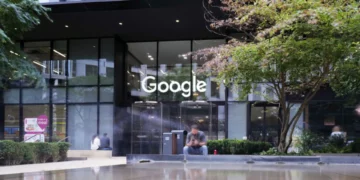Digitization and artificial intelligence are driving a renaissance in the detection and mitigation of insurance fraud. A very new trend, these tools have the potential to stem the rise in insurance frauds seen in recent years, as microfinancing and paperless banks pull ever larger numbers of people into the financial system.
Some of the most common types of insurance fraud today include identity fraud and ghost broking (where fraudsters impersonate or manipulate identification data), staged accidents, double-dipping (making multiple claims for the same incident), and inflated and phony claims. The anonymity of the internet has led to a proliferation of insurance fraud, often via innovative schemes. Most insurance providers say that they have observed a significant increase in fraudulent claims in recent years, and human operators unwilling to modernize are finding it difficult to keep up.
However, the law is catching up in the arms race, and new fraud detection technologies and methods are now leveling the playing field. The potential benefits are enormous, as McKinsey estimates that tighter fraud management could save more than a trillion dollars in losses.
Using machine learning analysis to flag high-risk claims
Probably the most powerful tool now available to insurers is to use machine learning-based analysis to detect new fraud schemes, automatically flag suspicious claims and analyze market statistics to identify leak points. Machine Learning allows the software to analyze existing to continuously teach and improve itself, and mass application of this is the most transformative aspect of Insurance 4.0
Machine Vision and videophony-based KYC norms
This is probably the lowest-hanging fruit and has already been implemented on a large scale by most financial firms, but there is still considerable scope for expansion and optimization. With the vast increase in new customers, especially in developing countries where data records are sometimes unreliable, identity fraud and credit reliability are becoming major issues for insurers.
By expanding the current KYC practices to include video call verification, machine vision analysis of photos, and two-factor authentication, there is an opportunity to vastly improve safety in a cost-effective manner.
Blockchain as a means of fighting double dipping
Blockchain is a new buzzword among technology enthusiasts; this technology (except cryptocurrency) can also revolutionize the insurance industry. It will make the industry much more transparent and expand global reach.
Blockchain is a global ledger that records every change made to it in an automatic, open, and irrevocable format. This prevents the common practice of double dipping, where multiple claims are filed for a single event. By logging every claim in the blockchain, firms can easily check whether a claim has already been filed and check the insurance record of a property/customer without any fear of manipulation.
Machine Vision and IoT-based cost assessment
Machine vision allows a computer to analyze visual data such as photos and videos in a similar way to humans, only faster, cheaper, and more accurately. This technology can be used to automatically analyze claims evidence to assess repair costs. This is especially useful in auto, appliance, and housing insurance claims.
The accuracy of machine vision is reaching a point where it can even differentiate between accidental and intentional damage. Thus it is fast becoming a vital tool for insurance firms to fight false or inflated claims. It completely eliminates the need for an agent to physically travel and assess the claim.
Similarly, the Internet of Things (IoT) allows appliances, cars, homes, and medical devices to automatically communicate with insurers, allowing automatic notification, faster claims processing, accurate assessment of damages, and even lower premiums through statistical analysis of received data.
Along with these new-age methods, technological advancements can benefit the insurance industry in myriad ways, such as AI Chatbots to improve the customer support experience, lower labor requirements, and better optimize resources. The coming revolution in the insurance industry is bound to improve global capital efficiency, investor confidence, and compliance experiences massively.

















